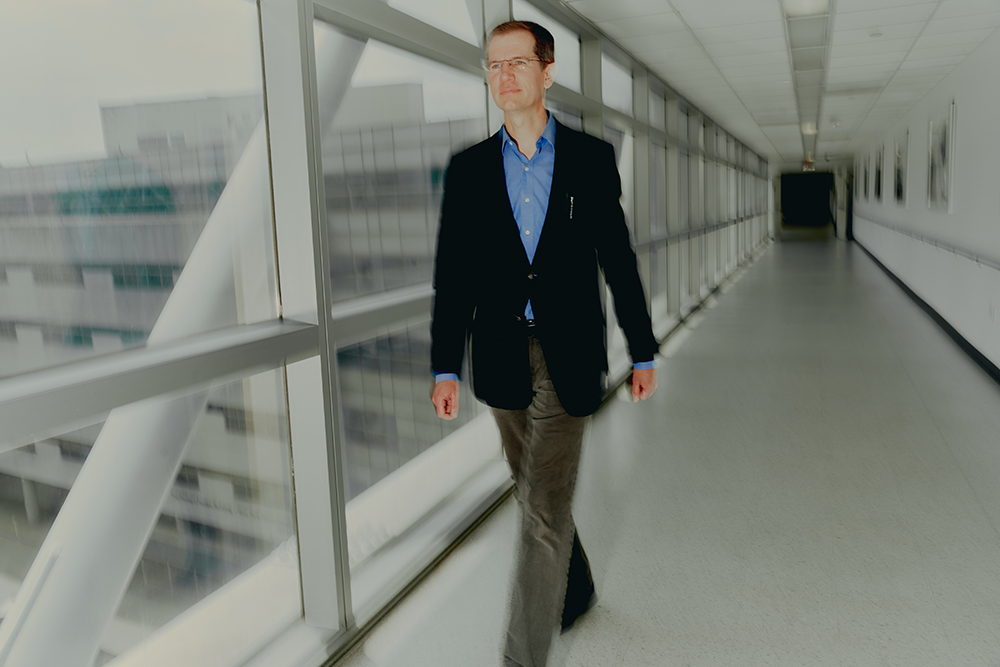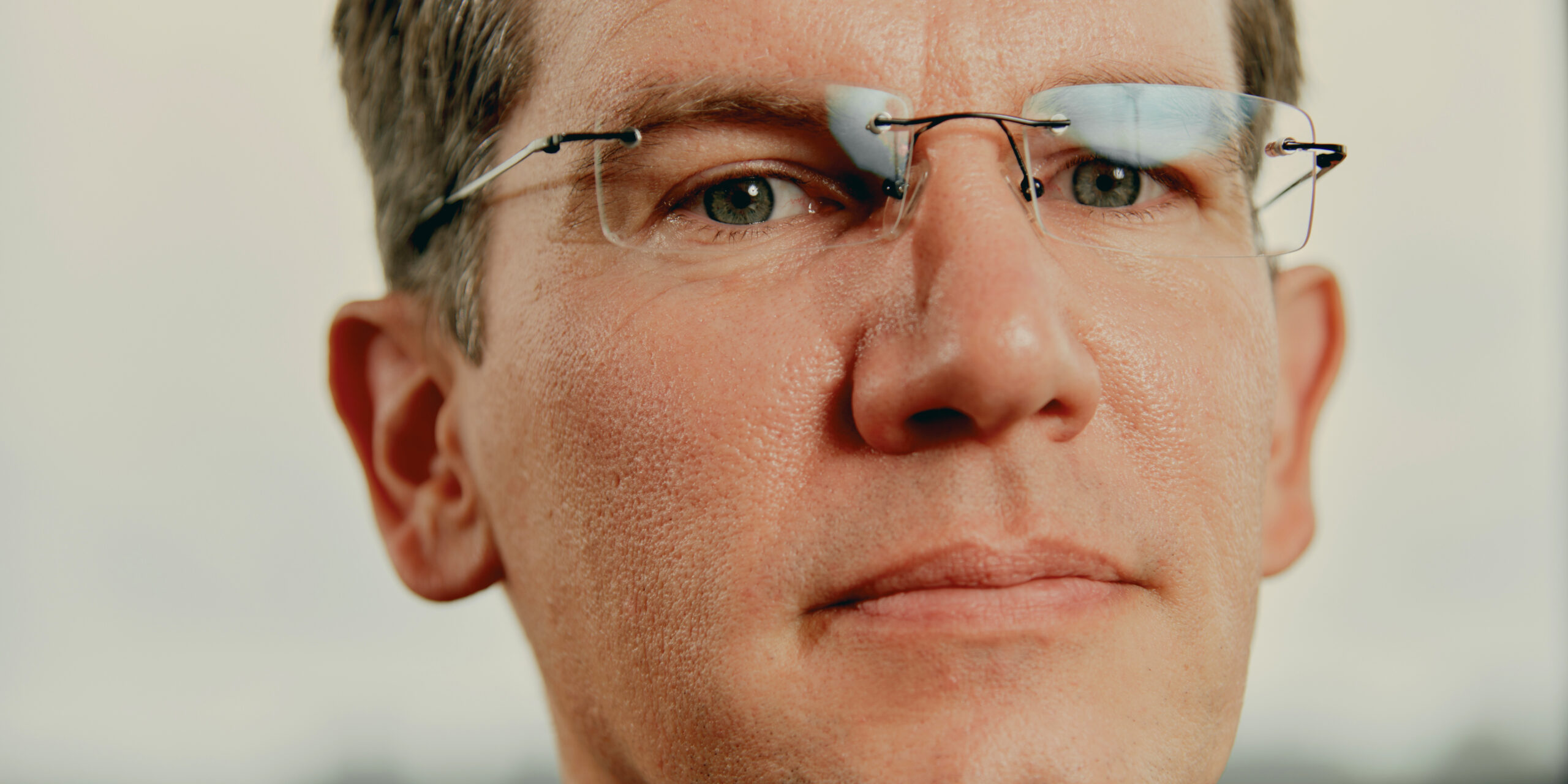Jeremy Veenstra-VanderWeele is accustomed to parents asking him what the next promising treatment for autism is. In this ever-evolving field, there is often a new answer to that question. But as someone who has seen countless clinical trials yield mixed or null results, he knows the word “promising” doesn’t always mean what they think it does. His life has shown him that.
Veenstra-VanderWeele is a clinician, a researcher and a teacher. He’s director of the Division of Child and Adolescent Psychiatry at Columbia University and an endowed professor there. But he also sees children with autism, obsessive-compulsive disorder and other neurodevelopmental conditions. Rather than trying to lessen the core autism traits in the children he sees, he mostly seeks to address their immediate sources of difficulty — constipation, perhaps, or seizures or inflammation. “We know how to treat those things,” he says.
Through this experience, Veenstra-VanderWeele has spent years in the thick of autism therapeutics. Yet he has never seen even one drug approved to treat autism’s core traits. Aripiprazole and risperidone, antipsychotics with heavy side effects, are approved to treat irritability in people with autism, but neither addresses the condition’s main traits. And although there are drugs he might prescribe off label, he’s cautious — he has been burned before.
Veenstra-VanderWeele came up in the ’90s, attending medical school at the University of Chicago in Illinois. Open-label trials of serotonin-specific reuptake inhibitors (SSRIs) were all the rage back then, and fluoxetine (Prozac) and sertraline (Zoloft) were having their moments for treating depression. Early results suggested that low doses could help autistic children, too, by easing core traits.
In open-label trials, everyone gets treatment and no one is blinded, and that tends to ratchet up the placebo effect. Veenstra-VanderWeele knew this in theory, and indeed he saw it happening to his own patients: Just as many seemed to see a benefit as didn’t. Still, he continued to prescribe SSRIs, the same as everyone else.
It wasn’t until the first randomized, controlled trials of SSRIs in people with autism began reporting data in the late 2000s that he paused. The drugs showed no benefit whatsoever, and Veenstra-VanderWeele was forced to ask the hard question he should have asked earlier: What was the cost of prescribing these drugs? Against what benefit? Because every drug has a cost. In this case, children had been exposed to chemical compounds that provided no benefit, and families had sunk their hope into a drug that was never going to help.
Those failed SSRI trials reminded him of his mother’s experience. In 1992, when Veenstra-VanderWeele was just starting college, his mother Albertena was diagnosed with breast cancer. She received a standard course of radiation and a lumpectomy, but four years later the cancer was back, and it had spread. Uncontrolled studies at the time suggested that a combination of high-dose chemotherapy and a bone-marrow transplant was the best course of action for advanced breast cancer, so her doctors recommended she try it.
The team harvested stem cells from her bone marrow and used high-dose chemotherapy to try to wipe out the cancer. She spent more than a month in the hospital as the reintroduced cells took root in her bone marrow and produced white blood cells. It was a scary, painful, miserable experience. When she came out the other side, though, she was clear of cancer, and it seemed the stem cells had played a part.
The next year, results of a clinical trial investigating bone-marrow transplants and high-dose chemotherapy for breast cancer came out in The Lancet, and the results showed no significant survival difference in people on conventional low-dose chemotherapy versus those on high-dose chemotherapy plus a stem cell transplant. It was similar to the SSRI trial: His mother had been through unnecessary pain and had put her hopes into a stem-cell treatment that was ultimately no better than the standard of care.
The revelations around SSRI use and his mother’s stem-cell treatment melded in Veenstra-VanderWeele’s mind. “We aren’t always right about what we think in medicine,” he says. Now when patients or parents ask about accessing unproven treatments, he finds himself pushing them elsewhere. He has devoted his career to chasing down real answers.
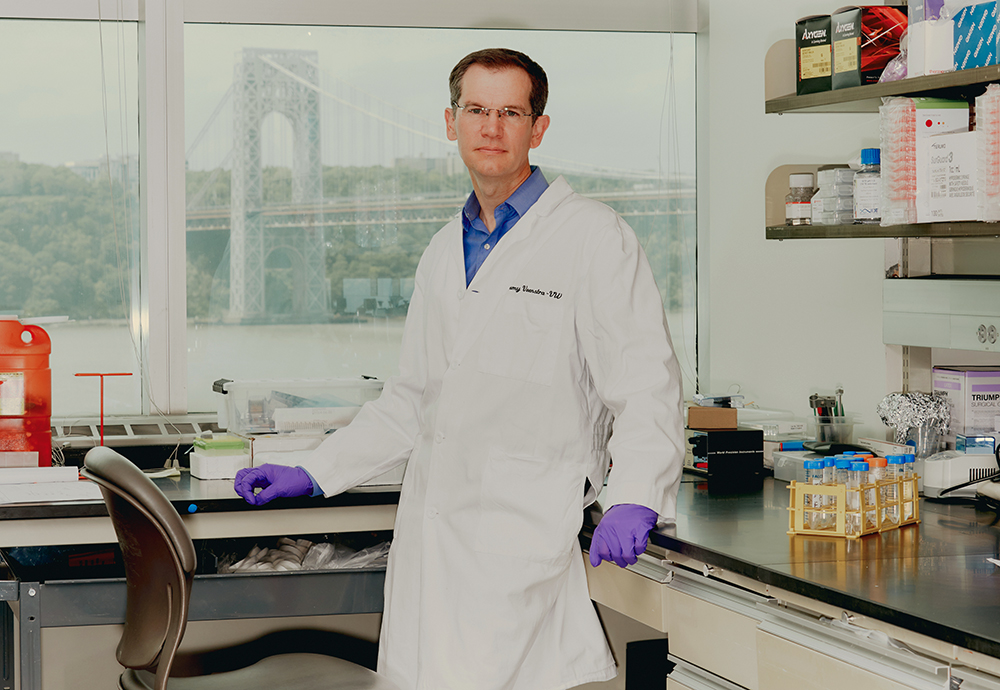
V
eenstra-VanderWeele was born in Ontario, Canada, but grew up in Orange City, a small town in Iowa. His father, Michael, was an English professor and Albertena was a career counselor. The oldest of four children, he was a shy and socially anxious boy, and he spent his days in the woods, collecting crickets and once trying to rig up a device to catch a squirrel he might keep as a pet. But he also escaped into books — reading history, science fiction, “The Chronicles of Narnia.”Orange City was a Dutch-American parochial community. Veenstra-VanderWeele attended Christian schools through seventh grade. Religion was part of his life. But when his family moved to Chicago to be closer to his ailing grandfather and his father took a job at Trinity Christian College, Veenstra-VanderWeele’s mother encouraged him to take the entrance exam for a secular college-preparatory high school. He was accepted, and his parents decided he should take this new path.
His secular school was more diverse than what he’d been accustomed to in Iowa, and the small classes and strong science teachings were unlike his old curriculum. He spent a summer at the Research Science Institute, an international program that immerses young people in research. He worked on genetically engineering tobacco pollen before his final year of high school. In this new place, he excelled.
So much so that he was accepted to Harvard University. To help pay the tuition, Veenstra-VanderWeele worked at a tree nursery and washed dishes in college cafeterias. He also took a job helping with a research project that investigated potential treatments for cocaine addiction. There he learned how to interview people, and his interest was piqued.
The next summer he wanted to work in a neuroscience lab, and he reached out to Edwin Cook, now professor of psychiatry at the University of Illinois at Chicago. At the time, Cook was at the University of Chicago, and he was offering a research opportunity for an undergraduate student. At first, Cook mistook Veenstra-VanderWeele’s quiet nervousness for aloofness. But once Veenstra-VanderWeele was acclimated, he was everything Cook was looking for: modest, a quick learner, a mentor to other lab members.
Cook’s lab is where Veenstra-VanderWeele first ventured into autism research. He looked at variants of the glutamate transporter-encoding gene SLC1A1 in people with pediatric obsessive-compulsive disorder, as well as variants of serotonin-associated genes, including SLC6A4, HTR7 and HTR2A, in people with autism and in their relatives.
Also at the University of Chicago at the time was Catherine Lord, who is now distinguished professor of psychiatry and education at the University of California, Los Angeles. Back then, she was working on developing such diagnostic tools as the Autism Diagnostic Observation Schedule and the Autism Diagnostic Interview. Both Cook and Lord let Veenstra-VanderWeele sit in on their interactions with autistic children, and Veenstra-VanderWeele saw an ancillary link between these children and the shy, socially anxious child he had been. Lord, too, could see that shy side, she says; she found him less verbose than some Harvard students.
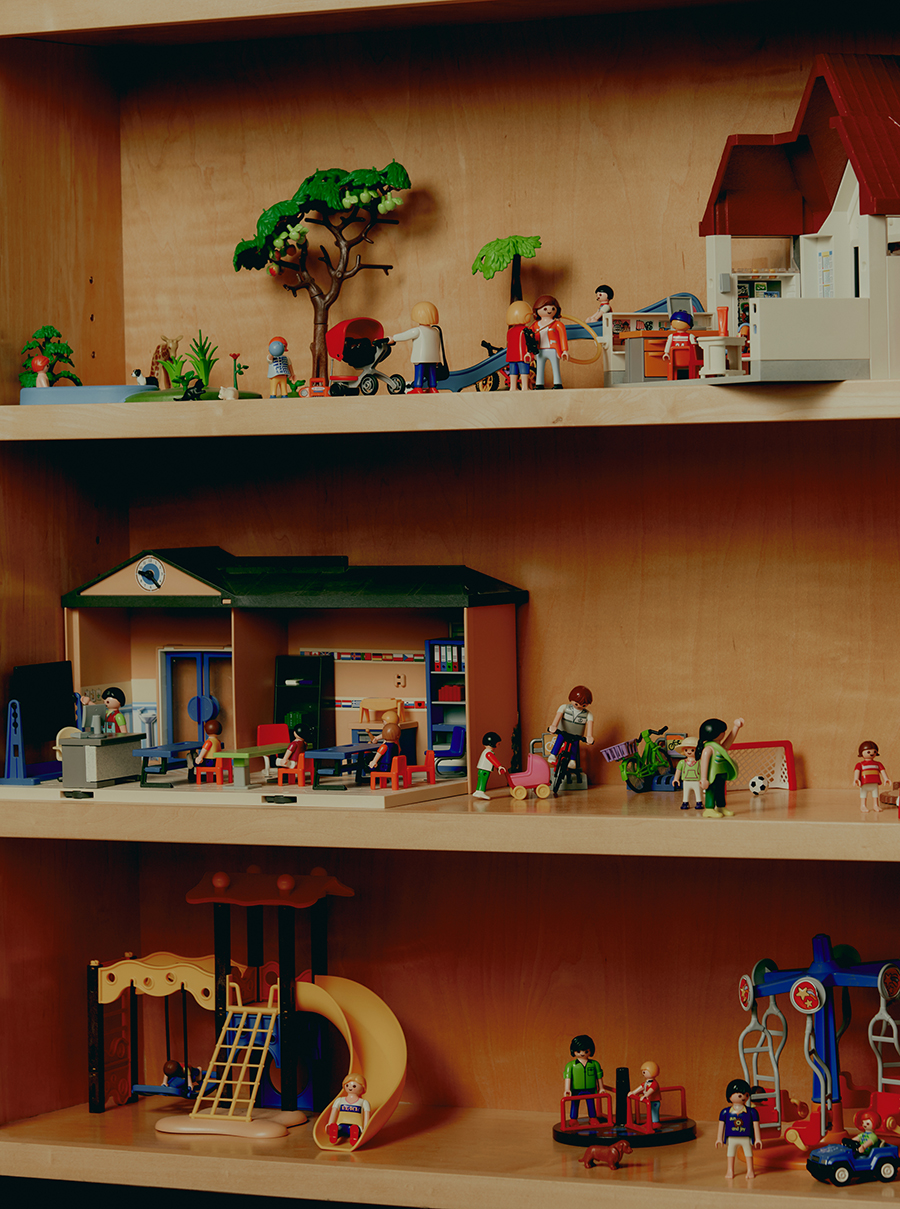
But if he was reserved, he made up for it in curiosity, and heart. Watching adult researchers interact with autistic children, he saw a kind of elegant artistry. “There was a beauty in the evaluations,” he says. It was beautiful the way one person figured out another’s struggles and strengths. Beautiful the way they awkwardly stumbled through those encounters.
Early in Veenstra-VanderWeele’s time in the lab, Cook identified a rare, small duplication in the chromosomal region 15q11-13. By chance, Veenstra-VanderWeele had met the child with the mutation, a young girl who never spoke to him but would sometimes reach out her shoe so he could tie her laces.
The connection he had made with her was “hard won,” he says, and today he still finds it rewarding to break through with someone “who has been struggling to be understood for a long time.” But the girl also made all the genetic data come alive. In his mind, he saw a line: from the biological origin of her condition, to finding an intervention that addressed it, to the possibility of improving her life.
V
eenstra-VanderWeele ended up at the University of Chicago for medical school, where he continued to work under Cook’s mentorship. He then toiled for five years as a postdoctoral researcher, first at the University of Illinois at Chicago and then at Vanderbilt University in Nashville, Tennessee. He spent nearly a decade at Vanderbilt, first as a postdoc and then in clinical, research and faculty roles. In 2014 he accepted an associate professorship at Columbia University, home to more child psychiatry trainees than anywhere else in the United States.At Columbia he is looking to ease the traits of autism and related conditions that so far have been difficult to treat, such as social difficulties. It’s likely there are medications that will help some subgroups of people, he says, even if nothing has been found yet. But finding these treatments requires well-designed clinical trials, conceived after solid preclinical evidence, and he has led his fair share of them.
They have not always worked. Intranasal oxytocin, for example, had previously seemed to show short-term benefits in autistic children, but in the clinic it didn’t pan out. The vasopressin blocker balovaptan similarly showed promise early on, but the drug was abandoned after an unsuccessful phase 2 trial in autistic children and adolescents.
In these failures, Veenstra-VanderWeele sees the upside. Even though the trials foundered, he doesn’t regret testing these drugs, because the trials were thoughtful and built on a foundation of careful preclinical research. That’s how answers are found, good or bad, he says. To use a baseball analogy, the trials are swings. Sometimes you miss, but “it’s important to keep swinging,” he says, “and to also be sure you’re learning from the swing.”
During his time at the University of Chicago, working with Cook and Lord, Veenstra-VanderWeele expanded on the long-standing evidence that some autistic people have elevated blood levels of serotonin — part of the same evidence base that motivated the disheartening work with SSRIs. But with some research showing a connection, he wasn’t willing to give up after the disappointing trial results. The group dug into variants associated with the serotonin 2A receptor, identifying heritable variants passed from parent to child, and in 2004 he and Cook were co-authors on a review of the nascent area of autism genetics, emphasizing the role of serotonin.
That was just the beginning, however. In 2015, he showed an association between blood serotonin levels and gastrointestinal issues in people with autism; and in 2018, he and Cook co-authored a study that showed a link between women’s serotonin levels and cognitive ability, and core autism traits in their children.
He is currently running a trial site for a phase 2 study of a serotonin 1B agonist, which is based on more than a decade of extensive preclinical work. Though data haven’t consistently supported serotonin’s role in autism, the preclinical work makes Veenstra-VanderWeele optimistic that targeting the system can help some people.
It’s not just his involvement with clinical trials, but also his breadth of experience in translational science that makes Veenstra-VanderWeele stand out, Cook says. “There aren’t that many people with a full bench-to-bedside, wet-lab-to-clinical-trial set of tools.”
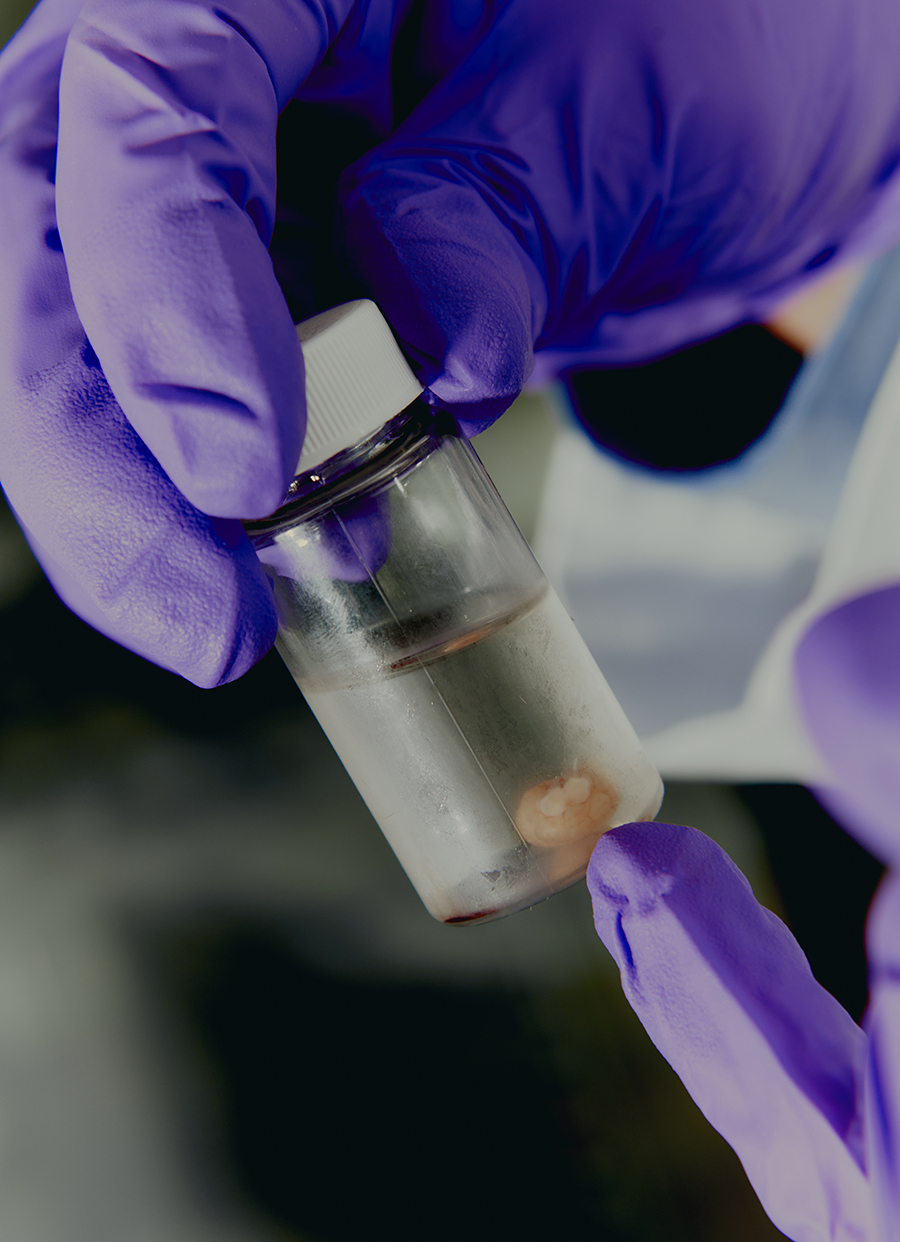
A
lbertena’s cancer came back in 1999, and she was treated with trastuzumab (Herceptin), the very first molecularly targeted cancer therapy designed to block the cancer-causing protein HER2. The treatment significantly extended her life, but she died at age 54. She had not beaten breast cancer, but she had lived some 14 years after her diagnosis. Long enough to see her youngest child graduate from high school. Through his mother’s fight, Veenstra-VanderWeele watched firsthand the halting progress of medicine: from radiation and surgery, to chemo with stem cells, to the precision treatment that gave her another seven years.
Earlier this month, results of two trials of the GABA agonist arbaclofen were presented at the International Society for Autism Research meeting in Stockholm, Sweden. Veenstra-VanderWeele had been waiting on this news for years – delayed even further due to the COVID-19 pandemic. Arbaclofen was abandoned a decade ago when it failed to show clear benefits over placebo for fragile X syndrome, but he was hoping the drug might work in a subset of children. After all, some participants’ parents said it seemed to help their child, and a 2017 re-analysis of the trial data that he and Cook worked on also had positive trends.
The new studies yielded mixed results, each too small for their primary outcomes to reach statistical significance. And so it goes. Another swing.
The point is to adjust. And in the new data, there was something interesting: The subset of children for whom arbaclofen eases problem behaviors might actually be larger than he previously thought. That, Veenstra-VanderWeele says, felt like “it could be something that’s sort of like a crack in the wall.” It’s possible that combining the groups might boost the numbers and help the results reach statistical significance.
But that’s when he’s thinking like a researcher, considering the future. When Veenstra-VanderWeele is thinking like a clinician, he’s stuck in the here and now. “What I try to figure out is if there’s something I can help with, using available evidence,” he says. “That isn’t treating somebody’s autism; that’s figuring out how you make their life better.”
